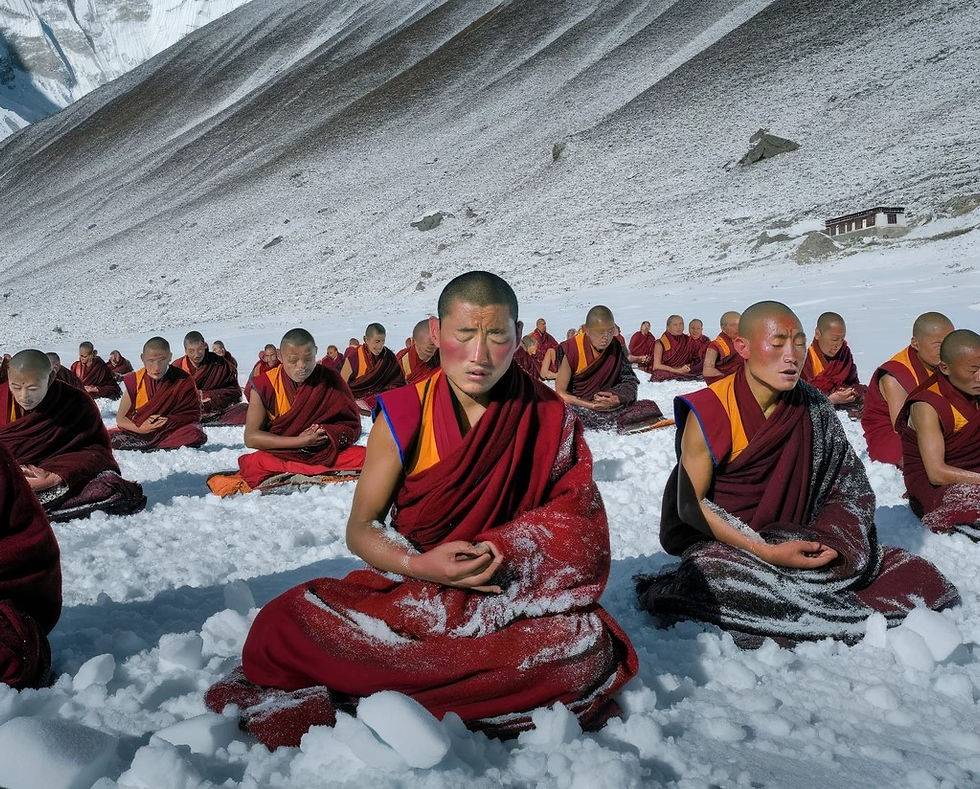ICE Bath, not just a Modern Hype: Historic Revelations on the Use of Ice Bath
- Plunge Coach
- Apr 3, 2024
- 3 min read
The use of ice bath and cold plunge or Cold exposure in various forms is a practice with deep historical roots, has been utilized across various cultures for health, ritualistic, and therapeutic purposes. This article explores the multifaceted uses of ice bath, shedding light on how different civilizations have harnessed the power of cold for physical, spiritual, and mental well-being. Specifically for the nonbelievers, that could be a proof that the benefits of ice bath and cold therapy are nothing new, they are very real, and they are here to stay.
Ancient Civilizations and Cold Exposure
The ancient Greeks, known for their advancements in medicine and philosophy, recognized the therapeutic benefits of cold water. Hippocrates, often referred to as the "Father of Medicine," prescribed cold baths to invigorate the mind and body, believing in the healing power of water. Similarly, the Romans, with their sophisticated bathhouses, utilized frigidariums (cold bath sections) to stimulate circulation and invigorate the body after the warm baths and saunas.
In the Far East, the Japanese tradition of Misogi, a Shinto practice of ritual purification, involves standing under cold waterfalls or immersing oneself in natural cold water sources. This practice, aimed at cleansing the spirit and body, underscores the spiritual significance of cold exposure in Japanese culture.
The Vikings and Cold Water Plunges
The Vikings, known for their resilience and strength, regularly braved the icy waters of the North Atlantic. They believed that cold water plunges enhanced their stamina, strength, and mental toughness. This practice, deeply embedded in their culture, was not only a test of physical endurance but also a ritual to honor their gods and prepare for the challenges of sea voyages and battles.
Now a days in Scandinavia, the tradition of ice bathing is deeply ingrained in the culture, particularly in countries like Finland and Sweden. The practice, often associated with the famous Nordic saunas, involves a cycle of heating in the sauna followed by a plunge into ice cold water or snow. This ritual, believed to improve mental clarity and resilience, also serves as a social activity, strengthening community bonds.

Native American Sweat Lodge and Cold Plunge Rituals
In North America, Native American tribes combined heat and cold exposure through their sweat lodge ceremonies. Participants would first sit in a sweat lodge, where intense heat induced sweating and purification. This was often followed by a plunge into cold water, believed to close the pores, invigorate the spirit, and restore balance to the body.
Russian Banya and Ice Swimming
In Russia, the traditional banya, a type of sauna, involves alternating between intense heat and cold plunges. This practice, deeply rooted in Russian culture, is believed to improve circulation, boost the immune system, and relieve stress. Ice swimming, particularly during the winter months, is also a popular tradition, reflecting the cultural belief in the invigorating and purifying properties of an ice bath.
The Himalayan Monks and Cold Endurance
High in the Himalayas, Tibetan monks have long practiced forms of cold exposure, such as the Tummo meditation, which focuses on controlling the body's temperature. Monks demonstrate extraordinary ability to generate body heat through meditation, enabling them to withstand freezing temperatures. This practice illustrates the power of the mind over the body and the potential for human adaptation to extreme conditions. This is the same as what the famous WIM Hof or the ice man has been practicing and achieved.

From the ancient Greeks and Romans to the Vikings and Native Americans, cold exposure has been a vital element in various cultural rituals and health practices. The historical use of cold exposure across different cultures demonstrates its significance in human history as a means to enhance physical and mental well-being. As we continue to uncover the science behind these practices, it becomes clear that what was once considered merely a ritualistic or therapeutic act is deeply rooted in our physiology and psychology. By embracing these age-old traditions and integrating them with modern science, we can continue to explore the full potential of cold exposure for enhancing health and resilience in our lives.
As the world becomes more interconnected, the practice of cold exposure is spreading beyond its traditional cultural boundaries. People around the world are adopting cold showers, ice baths, and winter swimming, integrating these practices into their wellness routines. This global adoption speaks to a universal human interest in the potential health and wellness benefits of cold exposure.


Property Investments Dubai actively publishes news on all relevant events related to the city of Dubai, as well as news about its key persons https://propertyinvestmentsdubai.com/persons/. These are published regularly and contain the latest developments that determine the development of the Dubai real estate market and affect the investment climate in the city. Here you will find exclusive interviews with industry leaders, success stories of entrepreneurs who have achieved significant heights, as well as in-depth analytical materials about key market players.This section will become an indispensable source of information for those who